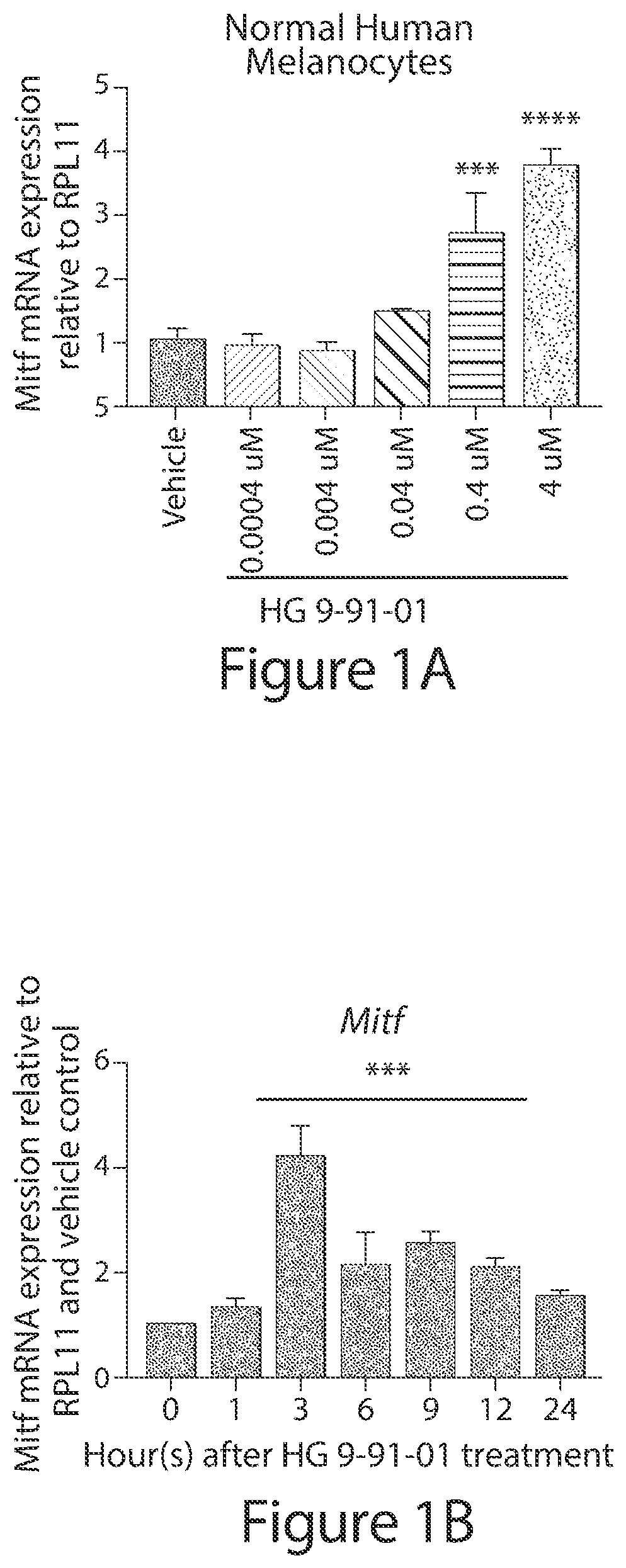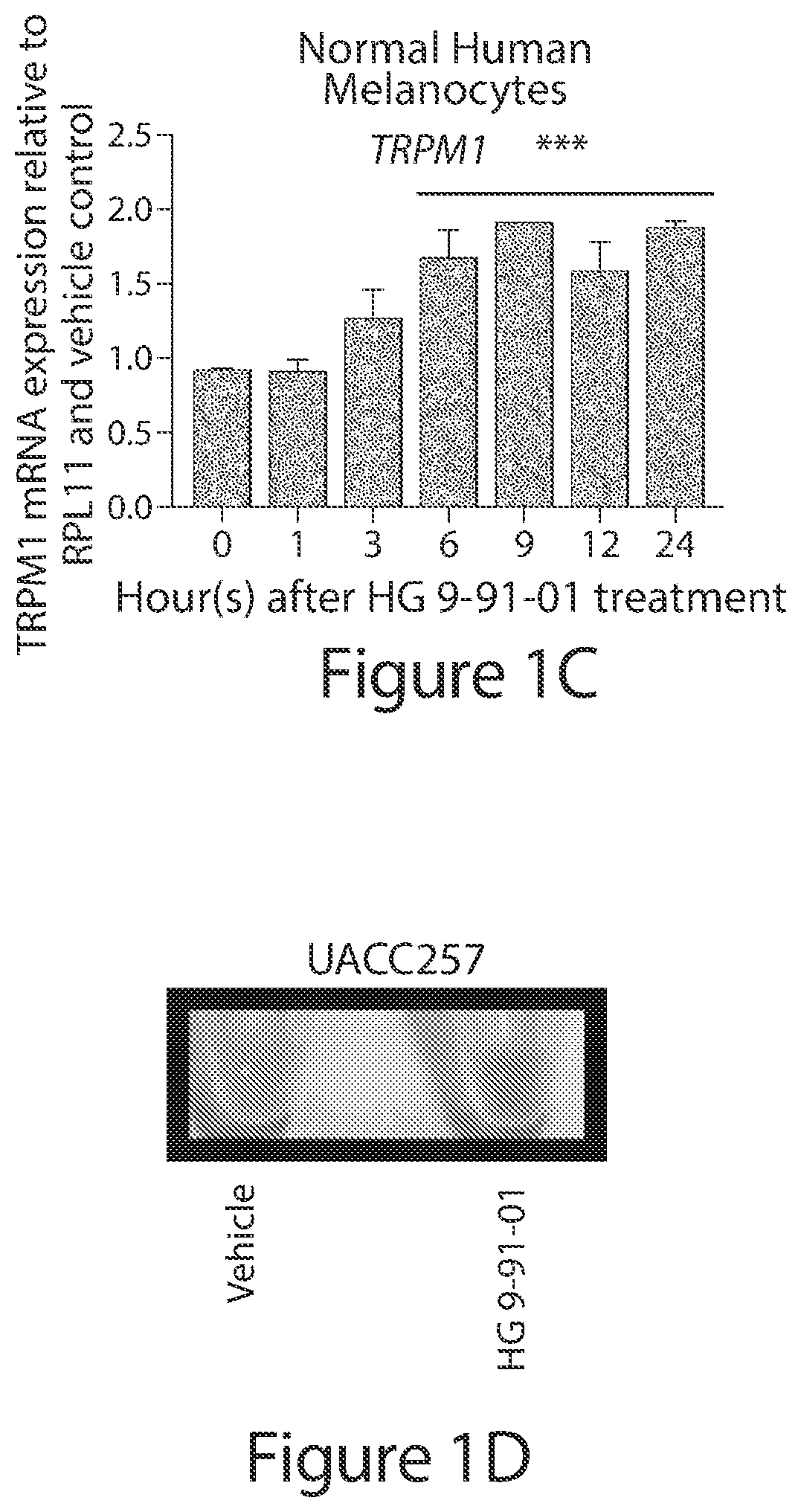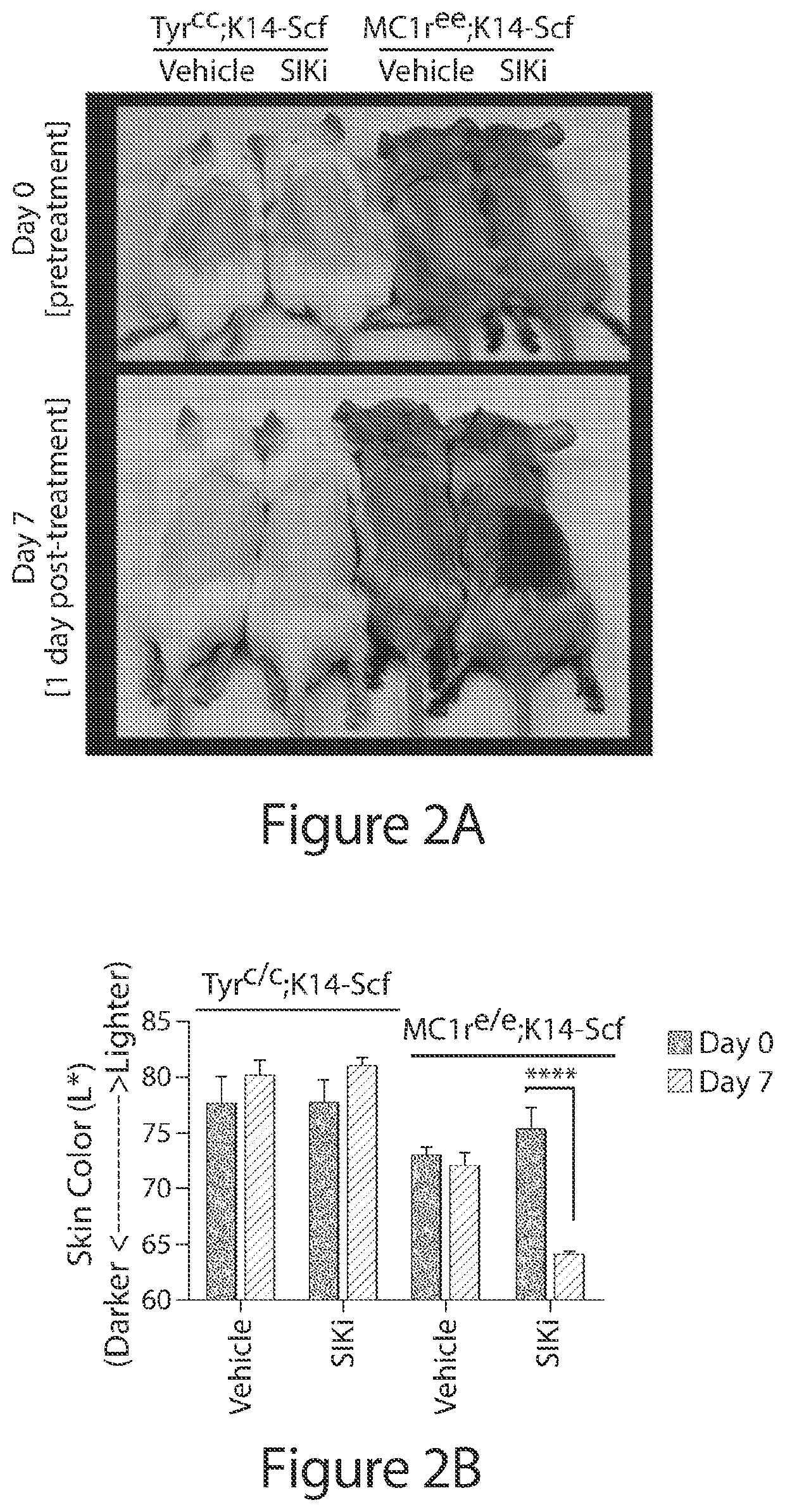Uses of pyrimidopyrimidinones as sik inhibitors
a technology of pyrimidopyrimidinone and sik inhibitor, which is applied in the direction of dermatological disorders, organic active ingredients, drug compositions, etc., can solve the problems of affecting uv protection and skin cancer risk, and the application of this topical strategy to human skin has not been achieved, so as to reduce the risk of skin cancer, increase skin pigmentation, and reduce the effect of skin pigmentation
- Summary
- Abstract
- Description
- Claims
- Application Information
AI Technical Summary
Benefits of technology
Problems solved by technology
Method used
Image
Examples
examples
[0483]In order that the disclosure may be more fully understood, the following examples are set forth. The examples described in this application are offered to illustrate the compounds, pharmaceutical compositions, uses, and methods provided herein and are not to be construed in any way as limiting their scope.
Methods
[0484]Materials.
[0485]Salt inducible kinase inhibitors were dissolved in 30% propylene glycol+70% ethanol.
[0486]Kinome Profiling.
[0487]Kinome profiling was performed using KinomeScan ScanMAX at compound concentration of 1 μM. Protocols are available from DiscoverX®.
[0488]Kinase Activity In Vitro Assay.
[0489]The biochemical activities against SIK2 were measured by Caliper-based mobility shift assay (PerkinElmer®). For these experiments, full length His6-MBP-tagged hSIK2 (4 nM) was incubated with HG-9-91-01 derivatives in buffer containing 100 mM HEPES 7.5, 10 mM MgCl2, 2.5 mM DTT, 0.004% Tween20, 0.003% Brij-35, 30 μM ATP and 1.5 μM ProfilerPro FL-Peptide 10 (5-FAMKKKVS...
example i
on and Characterization of Exemplary Compounds
[0509]Unless otherwise noted, reagents and solvents were used as received from commercial suppliers. Proton nuclear magnetic resonance spectra (1H NMR) were obtained on Bruker AVANCE spectrometer at 400 MHz for proton. Spectra are given in ppm (δ) and coupling constants, J, are reported in Hertz. The solvent peak was used as the reference peak for proton spectra. LC-MS spectra were obtained on Agilent 1100 HPLC LC-MS ion trap electrospray ionization (ESI) mass spectrometer.
Synthesis of YKL-04-114 and YKL-05-093
[0510]
2,4-dichloro-5-(iodomethyl)pyrimidine (2)
[0511]A mixture of 2,4-dichloro-5-(chloromethyl)pyrimidine (15.0 g, 76.0 mmol), NaI (13.7 g, 91.4 mmol) in acetone was stirred at 60° C. for 45 min. The resulting precipitate (NaCl) was removed by filtration and washed with acetone. The combined filtrate was concentrated to give light yellow solid, which was purified by column chromatography on silica gel (eluting with DCM) to obtain 2...
example 2
pendent Topical Small Molecule Approach for Melanin Production in Human Skin
Small Molecule Inhibition of SIK Induces Mitf Expression In Vitro.
[0527]To test regulation of the pigmentation pathway by the SIK inhibitor HG 9-91-01 (HG) in vitro, normal human melanocytes, UACC62 melanoma cells, and UACC257 melanoma cells were treated. Dose-dependent increases in expression of MITF were observed in these cells (See FIG. 1A; FIG. 7A, 7B, 7G). RNA levels of the MITF gene target TRPM1 (Miller et al) were also increased and followed the anticipated delayed kinetics relative to MITF induction in normal human melanocytes (See FIG. 1B, 1C) and UACC257 cells (FIG. 7G, 7H). Gross pigmentation was observed in cell pellets of UACC257 cells after 3 days of HG 9-91-01 treatment (See FIG. 1D). These data suggest that small molecule SIK inhibition may stimulate the pigmentation pathway in vitro.
[0528]Tables 2 to 5 below show the effects of exemplary SIK inhibitor compounds on skin darkening, including a...
PUM
| Property | Measurement | Unit |
|---|---|---|
| RG | aaaaa | aaaaa |
| RG | aaaaa | aaaaa |
| RG | aaaaa | aaaaa |
Abstract
Description
Claims
Application Information
 Login to View More
Login to View More - R&D
- Intellectual Property
- Life Sciences
- Materials
- Tech Scout
- Unparalleled Data Quality
- Higher Quality Content
- 60% Fewer Hallucinations
Browse by: Latest US Patents, China's latest patents, Technical Efficacy Thesaurus, Application Domain, Technology Topic, Popular Technical Reports.
© 2025 PatSnap. All rights reserved.Legal|Privacy policy|Modern Slavery Act Transparency Statement|Sitemap|About US| Contact US: help@patsnap.com



